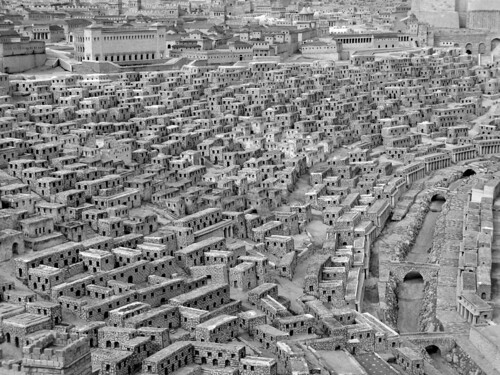Architecture of the City
For the most part the architecture of the city is a mixture of Southern and Northern design, heavily influenced by dwarf craftsmanship, as that stout race are responsible for building most of the city's structures, including the walls, towers and gatehouses that protect it.
The materials used are often an indication of wealth, with the wattle & daub and stone at the lowest levels, followed by timber and brick, to marble and other precious and fine stonework. Most of the buildings in the MERCHANT QUARTER are stone; while wood, coloured bricks, and expensive stone are proudly displayed in the NOBLE QUARTER and upon GREEN HILL. Stone also dominates the RESIDENTS QUARTER, with the poorer dwellings little more than wattle & daub huts crammed together to form blocks. A few houses are built with red or sandy bricks or, rarer still, imported timbers.
Most buildings are sharp-edged, flat-roofed and straight-lined; a mixture of Southern and dwarven architecture. The interiors are often spacious, with a few open-plan rooms in the Southern style, while the sombre colours and practical furnishings are heavily influenced by the North.
Both the NOBLE and TEMPLE QUARTERs display the most diverse architecture, based on individual taste or religious doctrine, wealth and prestige. The various temples, churches and shrines, in particular, are all different and often unique, although those that share the same pantheon have some commonalities.
Buildings generally have several stories, with the RESIDENTS QUARTER having the most floors, followed by the NOBLE, and MERCHANT QUARTERs, then the GREEN HILL. The TEMPLE QUARTER's buildings seldom have more than three floors, but they tend to be larger constructions and often rise higher than the walls of the city.
Designed and built by the dwarves, the city walls, IRON TOWERS and gatehouses are all constructed by great blocks of stone reinforced by thick iron bars embedded through the middle of the blocks, which help join them together. A dark and natural stone, the council has them rendered with a sand-based veneer, a colour scheme matched and often enforced throughout the city. As a result, the CITY OF BONES is a picture of faded yellow, akin to aged bones, adding another layer to the name of the city.




Comments
Post a Comment
Thank you, and may the Gods go with you.